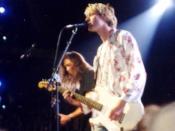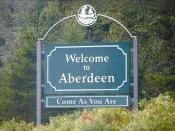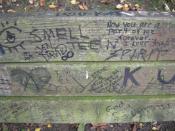Seattle in 1991: Before Microsoft, Frasier and Starbucks.
Ask someone what they think of when they hear "Seattle" and chances are that the 3 words above will surface. Not so at the beginning of the 1990s. Seattle was synonymous with one thing and one thing only: Grunge music and flannel shirts. In wasn't much later than its release in September 1991 that Kurt Cobain's kerrang was heard around the world. Bleach may have been their debut, and "In Bloom" was the first single off Nirvana's brilliant Nevermind album, but it was that opening riff off "Smells Like Teen Spirit" that captured the imagination of teens and twenty-somethings around the world.
It didn't take too long for critics and peers to start looking up Jimi Hendrix's birthplace to find out what the noise was all about. And noise it was. Great noise. Nirvana was definitely not the first band out of Seattle to play Grunge music, but it was the one that would make it explode, sending it to ridiculously stratospheric heights before making it crash and disappear from the earth's surface.
Who were some of the true pioneers? Bands like Mudhoney and Mother Love Bone were playing what would soon be labeled Grunge. But these outfits were genuinely alternative. Alternative in the sense that it was drastically different than 1980s Rock. While the Def Leppard's and Bon Jovi's created great rock music sugarcoated with layers of guitar tracks and monster vocals, Grunge music was sharply more raw and devoid of the excessive production polish.
Grunge blended rock with punk, fitting since Punk came around in the 1970s to give classic rock a good kick in the caboose when the likes of Styx and Boston were filling airwaves. But once bands like the Sex Pistols got old and tired,



Jimi
I feel that saying kurt influenced music as much as Jimi Hendrix is a very bold and arguably false statement. However, i found the tone of the essay good and a generally good summary of the sub-pop scene.
9 out of 9 people found this comment useful.